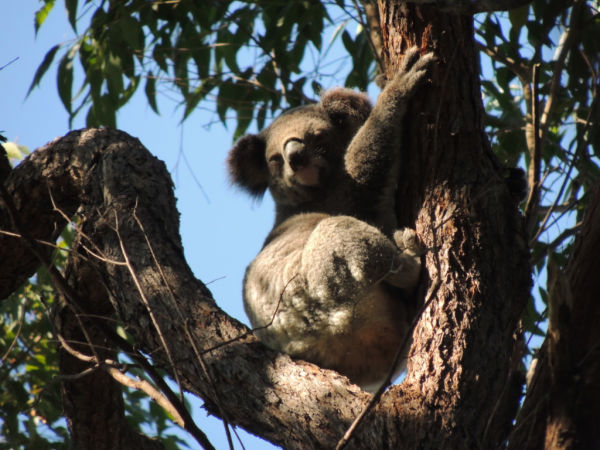Sustainability
- Home
- Locations
- What you can do
- LiFE Framework
- Sustainable Development Goals
- About us
- Grants
- Events
- Contact us
Now searching for:
Koalas are regularly sighted in the canopy at Charles Sturt University Port Macquarie.
 Koalas Phascolarctos cinereus, are native Australian tree-dwelling marsupials with predominantly grey coloured fur. They live in a range of temperate, sub-tropical and tropical forest, woodland and semi-arid communities dominated by eucalypt species. The health, size and status of koala populations differ significantly across Australia. Their conservation status: vulnerable in NSW, ACT and QLD
Koalas Phascolarctos cinereus, are native Australian tree-dwelling marsupials with predominantly grey coloured fur. They live in a range of temperate, sub-tropical and tropical forest, woodland and semi-arid communities dominated by eucalypt species. The health, size and status of koala populations differ significantly across Australia. Their conservation status: vulnerable in NSW, ACT and QLD
Koalas have suffered a dramatic decline in numbers and distribution since the arrival of Europeans. Most populations in NSW survive in fragmented and isolated habitat. Many areas where koalas are most abundant are subject to ongoing threats. As koalas generally give birth to one young a year, their populations cannot increase rapidly.
This is an iconic species for the Port Macquarie region with the world’s only Koala Hospital and a breeding program at the Billabong Zoo – Koala & Wildlife Park. There’s high visibility of the species with the Hello Koalas Sculpture Trail and also the inaugural Koala Festival in early 2017.
People have a close affinity with koalas and they benefit the Australian economy. It’s estimated that they create over 9,000 jobs and contribute between $1.1 billion and $2.5 billion per year to tourism in Australia. Koalas also feature in many Aboriginal dreaming and creation stories and are a totemic species.
Koalas live in eucalypt woodlands and forests. Home range size varies according to quality of habitat, ranging from less than two hectares to several hundred hectares.
Koalas are found between south-eastern South Australia and Queensland. The largest koalas weigh over 10 kilograms and are found in Victoria, while the smallest live in North Queensland and weigh only 5.5 kilograms.
In NSW, koalas mainly live on the central and north coasts, with some populations west of the Great Dividing Range, on the south coast and on the southern tablelands. Most populations live in isolated habitats and many areas in which koalas are most abundant are subject to intense pressures
A koala eats about half a kilogram of leaves each day. They are fussy eaters, choosing most of their food from a few varieties of eucalypt. In northern NSW tallowwood and forest red gum are important food sources. They use a variety of other trees for shelter during the day and in heatwaves or storms, including paperbark, she-oak, brush box and acacia trees.
Gum leaves are not the easiest things to digest - they are tough and contain oils which can be poisonous. To cope with such an unusual diet, koalas have a long, thin tube like an appendix branching out from their intestines. This tube grows to a length of two meters. It probably helps with digestion, although its exact function remains a mystery.
As their food contains little energy, koalas conserve energy by sleeping for most of the day and looking for food in the evening. Koalas do not normally drink water, as they get sufficient water by licking the dew from leaves.
Koalas face increasing threats from:
Chlamydia is a highly infectious bacterial disease. Koalas in NSW carry Chlamydia pathogens but do not always show clinical signs of disease. They have symptoms such as conjunctivitis and urogenital tract infections when they are stressed by the above threats. The disease weakens koalas, making them more vulnerable to death from other threats, particularly dog attacks and severe weather conditions.